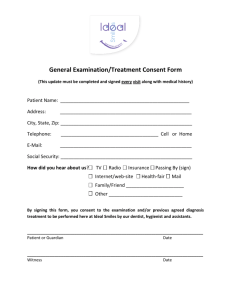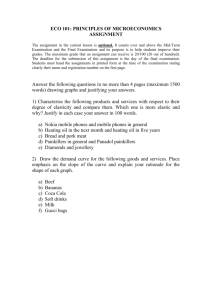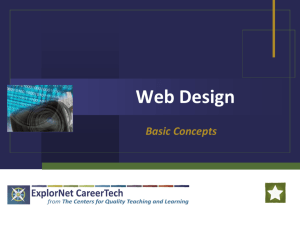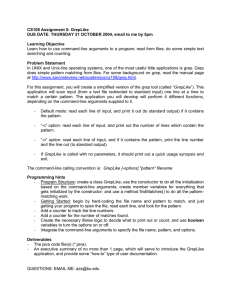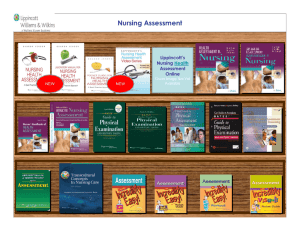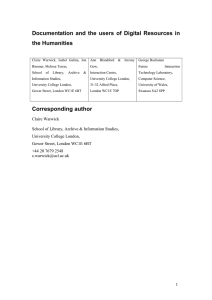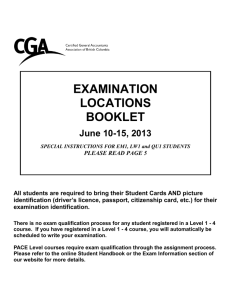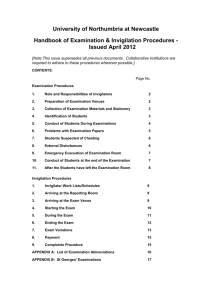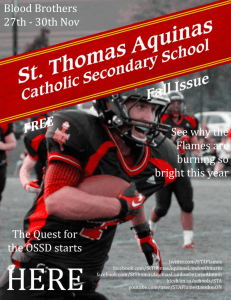humcomexam
advertisement
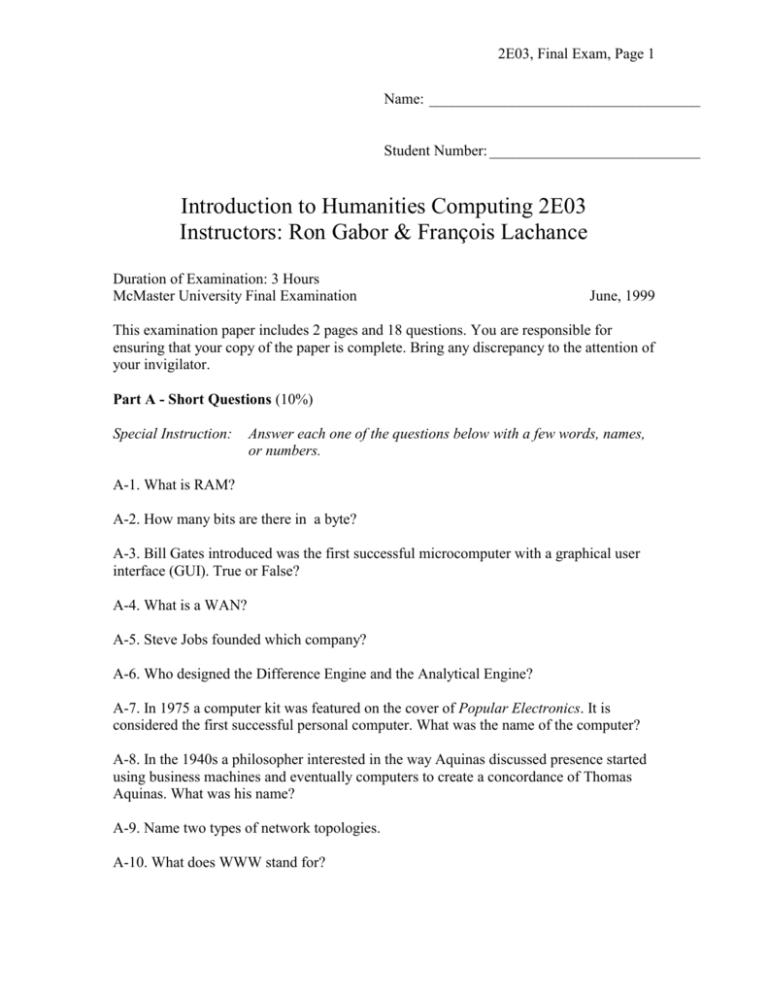
2E03, Final Exam, Page 1 Name: ____________________________________ Student Number: ____________________________ Introduction to Humanities Computing 2E03 Instructors: Ron Gabor & François Lachance Duration of Examination: 3 Hours McMaster University Final Examination June, 1999 This examination paper includes 2 pages and 18 questions. You are responsible for ensuring that your copy of the paper is complete. Bring any discrepancy to the attention of your invigilator. Part A - Short Questions (10%) Special Instruction: Answer each one of the questions below with a few words, names, or numbers. A-1. What is RAM? A-2. How many bits are there in a byte? A-3. Bill Gates introduced was the first successful microcomputer with a graphical user interface (GUI). True or False? A-4. What is a WAN? A-5. Steve Jobs founded which company? A-6. Who designed the Difference Engine and the Analytical Engine? A-7. In 1975 a computer kit was featured on the cover of Popular Electronics. It is considered the first successful personal computer. What was the name of the computer? A-8. In the 1940s a philosopher interested in the way Aquinas discussed presence started using business machines and eventually computers to create a concordance of Thomas Aquinas. What was his name? A-9. Name two types of network topologies. A-10. What does WWW stand for? 2E03, Final Exam, Page 2 Part B - Short Essay Questions (50%) Special Instruction: Answer every one of the questions below in a few paragraphs. B-1. Draw a diagram showing the major parts of a microcomputer. Label the parts. continued on page 2 B-2. What are the advantages and disadvantages of CD-ROM as a storage medium and as a distribution medium compared to hard drive? Why are so many multimedia titles appearing on CD-ROM? B-3 Describe a WWW site for humanities research. What sort of information would be on it and how would it be organized? B-4. What is the difference between the visual markup of information and logical markup? Comment on the significance of this difference. B-5. Identify two key moments in the history of computing and discuss their significance. Part C - Long Essay Question (40%) Special Instructions: Read the questions below carefully and answer two of them. C-1. What is an electronic text and how can a computer assist scholars in the study of an electronic text? Describe the tools scholars would use, the process they would go through, and the types of results they might obtain. C-2. What is a graphical user interface? How does it differ from a command-line interface? Describe the key differences between a GUI and a command-line interface. How do these differences correlate to user preferences? C-3. What are some of the ethical issues raised by networked information ? Discuss at least two issues and propose ways to resolve them. C-4. How can computers and communications technology like video-conferencing be used in teaching and learning? How does technology change what is taught and how it is taught and to whom? The End



